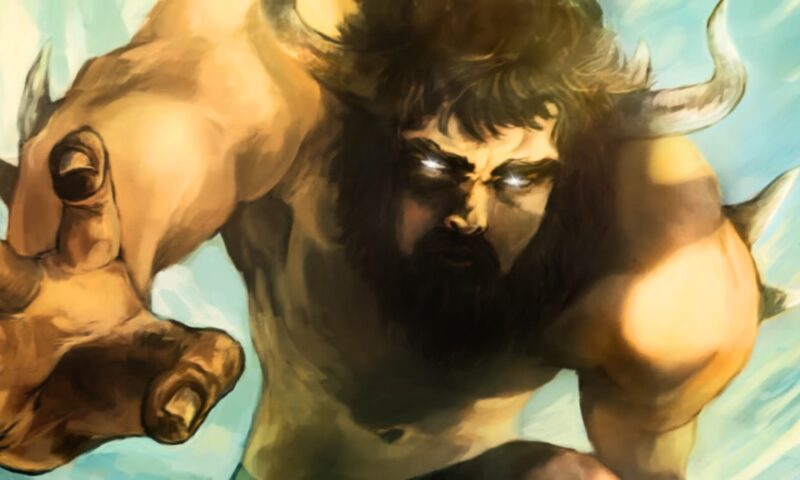Fomorians are considered the most ancient, native inhabitants of Ireland. As legends narrate, all invaders invariably met them on the island (up to 1700-700 BC). They gave to know about themselves at the time of Partolon who settled down in Ireland together with his companions after the Great Flood (about 12 thousand years ago).
From time to time Fomorias took shelter from conquerors in “the country of Fomorians” – “boundless flatness with a great number of human assemblages (gatherings)”, presumably in Britain – and on a mysterious island “with glass tower” – the Glass island or Inis Vitrin where the residence of their rulers (Tetra, Indech, Balor, etc.) was.
Legends place this island in the west of the ocean and compare it with “The land of blissful” which sometimes is called “Tetra Possession”.
Fomorians – colossal and ugly creatures
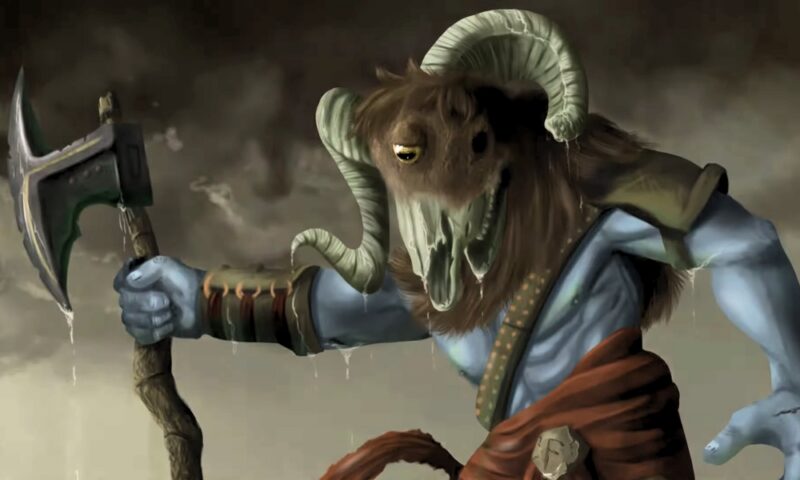
Generally, Fomorians were huge and ugly creatures. In the “The Book of Invasions” of Ireland (” The Book of Conquests”, Leabhar Gabhala Eireann) they are described as “crowds of abominable giants and monsters” – one-eyed, one-armed and one-legged giants, or as giants with a shapeless monstrous appearance and a different number of eyes and extremities.
For example, mother Fomorian Kihol, Lota had four eyes which were placed on her back, and the swelled lips were on a chest. Some fomorians had on their shoulders the heads of goats, horses, and buffalos
Leader of Fomorians Balor. The Eye of Balor
One of the most picturesque persons – the leader of Fomorians Balor. His father was Buarayneh, that is “buffalo-headed”. One eye of Balor has been always shut, because it was so poisonous (venomous) that slayed everyone on whom its gaze dropped (the same eye was at Viy). “Neither gods nor giants” couldn’t save themselves from his glare.
Therefore they had saved Balor’s life only on the condition that his killing eye would not cause injury to anybody. Here that is spoken about the eye of Balor in “The Battle of Mag Tuired” (Cath Maige Tuired) saga:
“The baneful eye was at him. This eye was opened only in the field of fight. Four persons were necessary to raise an eyelid of his eye by four polish rods passed through the eyelids. The army which would look in this eye, could not resist, even if be in many thousands by number”.
The “Destruction of Da Derg house” saga describes another Fomorian – swineherd Badb from the sid on the Femen plane which has similar features to Balor: “squint-eyed [on the left eye] with a baneful eye”.
Fomorians – “green half from land to crown”
It is rather a curious description of Fomorian Loh Letglas in “The Battle of Mag Tuired” saga who was “green half from ground to crown”.
Fomorians – werewolves. Marriages of Fomorians with Tuatha de Danann
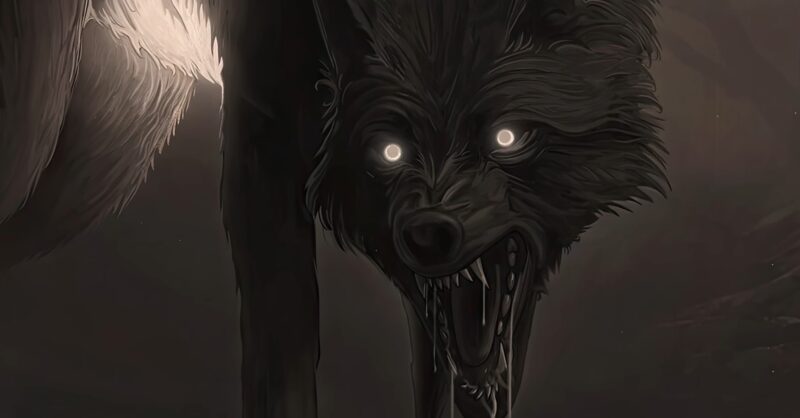
Perhaps, it is all descriptions of the true appearance of Fomorians. Much more often in legends, there are other Fomorians – werewolves espoused with men and women of the people of Danu (the Danu people). Here they have an appearance of perfect girls and young men – well-matched Tuatha.
Here before us is Fomorian Elatha – the warrior with golden yellow hair and in a garment embroidered with gold threads with gold patterns which have liaison with Eriu from the Danu people.
From that liaison Bres (Bress mac Elatha) was born, who became soon the ruler of Tuatha. Other men and women of the people of Danu have also been related to Fomorians by dynasty marriages, for example, Lug, the mister of hundred crafts, was the grandson of the sovereign of Fomorians Balor and the divine physician Dian Keht from the Danu people .
Fomorians – beings, comparable with Tuatha de Danann in magic art
Both in Irish and Welsh legends there is not enough information on the lifestyle, customs, and capacities of Fomorians. They were the only beings comparable to Tuatha de Danann in the art of magic.
They could clear away a fog, withdraw (take back) waters, and stop a storm called by magicians of the people of Danu. Imitating them, druids sometimes conjured, standing on one leg and having folded one eye.
The data present that Fomorians (at least, one of them by the name of Mata) could “hear” any talks in the country because the wind brought them all the words even said in a whisper.
Fomorians were rather tempted in military science and fought almost against all who arrived in Ireland.
“Truly, to fight against Fomorians was, all the same, to punch a wall by the head, to hold an arm in a snake nest, or to substitute a face to flame”.
Destiny of Fomorians
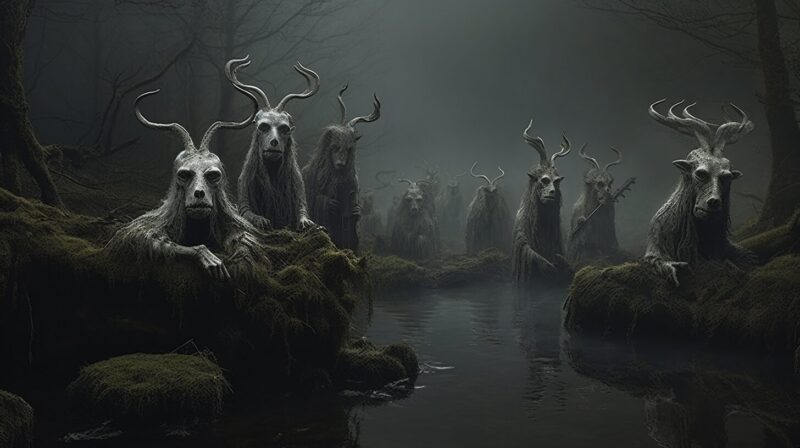
In 1700-700 BC Fomorians together with the People of Danu had withstood three or five fights with the Sons of Mile Spanish while those could not prevail against them. According to one legend, they had lodged in subterranean hills-sids which they divided with Tuatha de Danann, or had left even more under land, on other – had sailed away at sea.
Fomorians – perfect breeders and farmers
Irish legends indicate that Fomorians were perfect breeders and farmers. Bres, appealing for mercy to Tuatha då Danann, promised that “milk at cows of Ireland” will not run out forever”. Then he had told that if he would be saved, Irishman would reap the harvest each quarter of the year.
At last, when it also had not saved him, he had learned “people of Ireland” how it is necessary to till, sow and reap: “… let till on Tuesday, fields sow on Tuesday, on Tuesday let reap”. This formula which had saved the life to Bres is alive till now in Ireland as a talisman from otherwordly forces which aim to steal the fruits of farmer labors.
Who fomorians were?
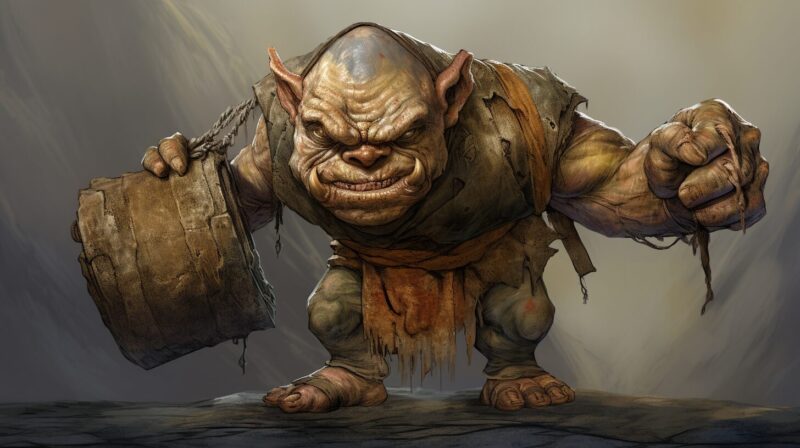
So, who Fomorians were? More often they are considered by dark demons or gods and opposed to light demons or gods – Tuatha då Danann. Their progenitress was the goddess Domnu, the name of which means “abyss”, “a marine abyss”, and the word “Fomorians” according to A. Riis and B.Riis (the Legacy of Celts, 1999) mean “living under the sea”. The sovereign of Fomorians Indech was the son of Domnu.
There is an opinion that the word “Fomorian” means virgin antiquity or chaos to which Celts traditionally related the immense ocean populated by monstrous monsters. It was opposite to such concepts, as heaven and the sun. Fomorians themselves are considered beings more ancient than gods, from ams of which they, in the long run, should be perished.
In the late medieval texts the word “Fomorian” acquires meaning “giant”, and in church tradition, they are imaged in the same row with elves, horse-headed, and other ugly beings. Sometimes they are considered as the tribe (nation) leading their stem from Cain and Ham, the damned son of Noah.

